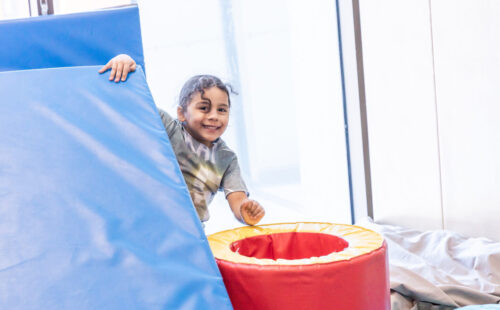Over the past two challenging years, parents have been called on to perform their roles simultaneously — worker, parent, teacher, household manager…. Because of this shift in the norm, many parents have experienced a sharp increase in the quantity of time they spend with their children. It’s good to remember, however, that while the quantity of time we spend with our children does matter, it’s also important to reserve some space for quality time.
What is quality time? And why is it so important?
Quality time involves a person bringing their full attention and awareness into an interaction with another person because they value that relationship.
When children and parents share focus on each other, a connection in their brains is activated. This connection (or emotional attunement, as we’ll cover in a later blog) brings about a sense of wellbeing and delight. It occurs when a person feels “felt” or understood by the other person.
Spending quality time with your child lets them know they can rely on you; it helps them feel important and competent. It supports the development of their self-esteem and self-control. Research also shows that quality time spent with children is positively connected to children’s educational, cognitive, and social development.
How to create quality time
Because parents have a multitude of competing responsibilities and commitments, the idea of creating focused quality time may feel overwhelming. Or perhaps, your own experience of being parented did not include this focused time, and you don’t know where to start. It’s understandable to have reservations or questions about how to begin. Fortunately, quality time does not have to take hours. Families can experience equally positive results by spending 10-15 minutes together every day. The key is to have quality time with your child consistently.
It may help to start by thinking about a typical day with your child, and then build quality time into your routine. Consider if there are natural moments in your day when it might be easier to put away your phone, turn off electronics, minimize other distractions, and dedicate your full attention to your child. Perhaps mornings are so busy and rushed that you can’t imagine adding one more thing. Is it a little less chaotic after dinner? Maybe evenings are a struggle because you are so exhausted after a full day. Could you build in time after breakfast? There is no right or wrong time. Just pick a small window that works best for you and your child.
What can quality time look like?
Quality time can take on many forms. Here are a few ideas to get you started:
- Blow bubbles. This is a fun activity indoors or outdoors (even in the winter). If you are not a fan of bubbles because they are too messy, try this activity in the bathtub.
- Play pretend. What is their favorite thing to pretend right now? Do they like being a superhero, a dog, a teacher, a dinosaur wrangler? Finding joy in mutual play and showing your child you are curious about them can help them have better self-esteem. They will learn that you value them, and it will help them build more confidence in themselves.
- Ask them about their day. What was their favorite part? What was their least favorite part? Why did or didn’t they like those moments?
- Read together. For younger children, remember you don’t have to read every word; you can talk about the pictures and comment on what they are interested in as they turn the pages. For older children, try taking turns reading. Or read to them in a silly voice. What voices might they pick?
- Build a fort with pillows and blankets.
- Put on some music, and sing or dance together. You could ask them to “freeze” each time the music stops. Freezes provide some added fun, and they help children practice slowing down or regulating their bodies.
- Follow their lead in free play. What are they most interested in right now? Try joining in on their play by commenting on what you see them doing. Remember to follow your child’s lead. For example, you might notice your child building a tower of blocks, and you might narrate what you see them doing, “You are building a tall tower…. You chose a red block to stack this time…. Whoa, you caught the block before it fell and saved the tower!” If they ask for help, you can say something like, ”How would you like me to help?” This way, you continue allowing them to lead.
Whatever activity you choose, remember to minimize all distractions (for both you and your child), and remain engaged. When you can, follow their lead. Let your child choose what they want to play with and explore. Let your child direct the play. Ask them about what they are doing or describe what you see them doing. By following your child’s lead, you are supporting them to develop better control of their emotions and their bodies. It helps them feel confident and know that they can do great things. As they get older, it will help them develop skills to sit still and pay attention in school.
If this is a new way of being for you and your child, it might take some practice for both of you. Or if it’s been a while since you’ve engaged in quality time, it might take a bit to get back into the swing of being together. That’s OK. Remember: You don’t have to be perfect. Just start by being present and attentive.
If you would like to learn more about connecting with your child and making the most of your time together, Home Visiting or one of our other programs at St. David’s Center may be right for you. Click here to learn more.
